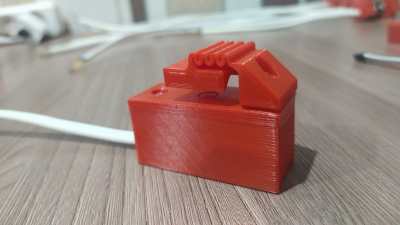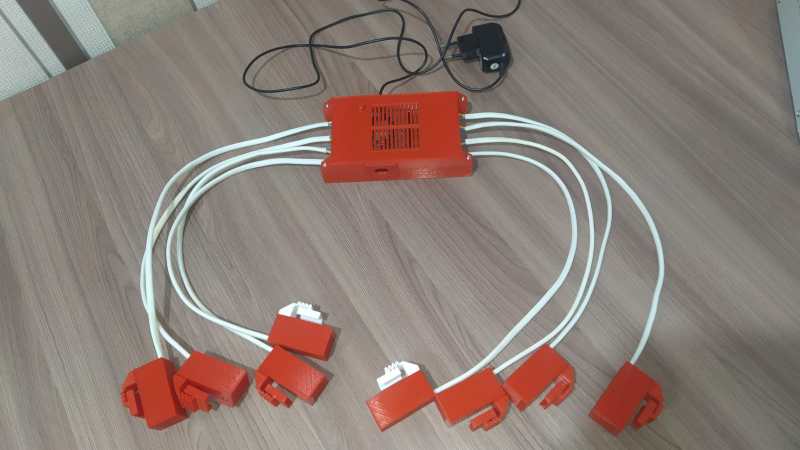Modern techniques of Coordinated Reset Stimulation (CRS), which is usually administered with invasive deep brain stimulation, can have a miraculous effect on those suffering from Parkinson’s disease. However, the CRS technique can also apparently be administered via so-called vibrotactile CRS (vCRS) which essentially means vibrating certain nerve endings corresponding to brain regions that have a large cortical representation.
An example is vibrating the tips of the fingers using special gloves. This is a medical technique and as such is governed by the FDA. With ongoing trials, patients all around the world will simply have to wait. [HackyDev] has been working with a group of people on developing an open source vCRS glove.
This neuromodulation technique seems so promising, that this upfront effort by hackers around the world is simply a joy to see. Patents be dammed; we can work around them. Interested parties can follow the (very long, tricky-to-follow) thread here.
The hardware [HackyDev] put together uses a nodeMCU as the controller, driving eight motor coils via MOSFETS. The finger-mounted actuators are constructed by ripping the electromagnet out of a relay and mounting it in a 3D printed frame, with a magnet suspended on a spring. This part is mounted on each finger. The nodeMCU presents a simple web form that enables the configuration of the pulse parameters.

The way the gloves appear to work is due to the way the body perceives sensory input, with a massive bias towards the hands and mouth region, referred to as the cortical homunculus. Each finger has an individual haptic element, which is actuated in a specific sequence with a carefully formed pulse at approx. 250 Hz.
This appears to activate similar in-brain effects as traditional (and invasive) DBS therapy by effectively de-synchronizing certain over-synchronized brain pathways and alleviating the overactive ß-wave activity in the brain. And this calms the tremors as well as many other PD symptoms. It’s all very exciting stuff, and we’ll be following this story closely.
For more on the backstory check out the 2017 paper by Peter A. Tass, as well as this later one, and this one. We’ve seen some recent success with diagnosing or at least detecting PD, by smell as well as via audio, so the future might look a little brighter for quite a number of people.















Thank you for posting this. We’ve got tremors in my family and it’s wonderful to hear about the research going on, even if it’s still in development.
And here I thought CRS meant Can’t Remember $#!+
This has a tremendous potential to change the lives of Parkinson’s patients. I’m eager to see how well it works. Mine is a week or so away from trying it out. The vibrators HackyDev is using is very interesting. I’m hoping LRA vibrators will work as well and be easier to duplicate.
Please let us know about the results
My gloves actually worked fairly well, although I’m hoping improvements I’m working on will increase their effectiveness. Google FreedomWavePD.
I have been working on this, with a lot of help, since shortly after the Today Show story (https://www.youtube.com/watch?v=YEEwbxFT4Bc&pp=ygUWdG9kYXkgc2hvdyBwYXJraW5zb24ncw%3D%3D) came out. I was able to persuade EAI to sell me nine C-2 vibrotactile units with wires and plugs. I have built only the gloves so far.
My brother in law has acquired an ESP32 development board that can almost certainly replicate the functions of the units produced by Dr. Tass. We have been discussing what algorithms the unit will employ, which were not described with a lot of clarity in the November, 2021 Tass paper (https://www.readcube.com/articles/10.3389/fneur.2021.758481). We hope to eventually have a unit performing identically to the ones Dr. Tass had made in 2021, with the possibility of some added flexibility that might become desirable should better stimulation patterns be discovered. We reached some conclusions about what the various stimulation patterns should be.
Some of those conclusions may be wrong. Only a few days ago we discovered the numerous posts at https://healthunlocked.com/cure-parkinsons/posts/148836810/tass-vibrating-gloves-diy-hacks-ideas-prototypes… and the very recent posts at Hackaday. The posts were helpful in many ways.
But to say that I have suddenly become more than just a little confused about the number of different patterns that should be employed, the nature of those patterns, and some other details (e.g., in the non-mirrored pattern, should the order of finger stimulation in each cycle be selected at random, on the fly?).
I was wondering whether anyone who has progressed farther than we have might be willing to point us to clear and better descriptions of the various stimulation patterns. My gratitude would be beyond expression.
I wonder if this method can imitate other forms of DBS? I know DBS has been researched for major depression and other disorders.